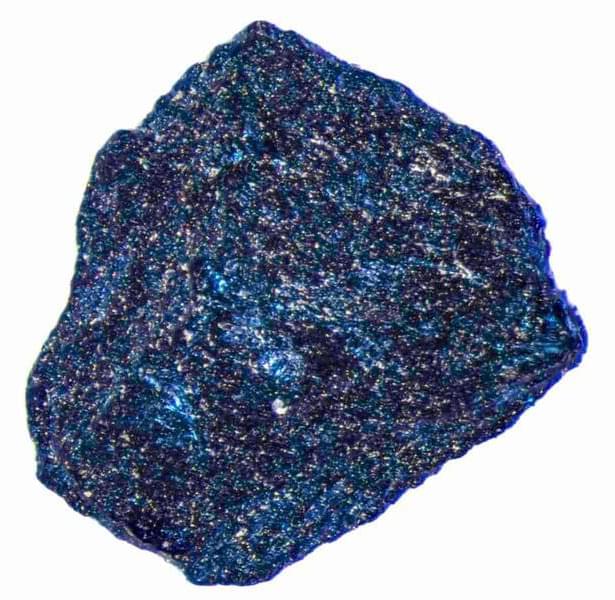Mar 16, 2023
The Cosmos as a Colloid
Posted by Saúl Morales Rodriguéz in categories: materials, space
A new methodology for analyzing the 3D distribution of galaxies borrows techniques from the study of colloids and other disordered materials.
A new methodology for analyzing the 3D distribution of galaxies borrows techniques from the study of colloids and other disordered materials.

https://youtube.com/watch?v=ryJxMYX7YEU
The novel substance is detailed in a research paper, Evidence of near-ambient superconductivity in a N-doped lutetium hydride, which is published in the scientific journal Nature.
“It is very difficult to change the properties of a medium quick enough, uniformly, and with enough contrast to time reflect electromagnetic signals because they oscillate very fast,” Gengyu Xu, a co-author and post-doc student at CUNY ASRC, said in a press statement. “Our idea was to avoid changing the properties of the host material, and instead create a metamaterial in which additional elements can be abruptly added or subtracted through fast switches.”
This time reflection also behaves differently than spatial reflections. Because this time echo reflects that last part of the signal first, the researchers say that if you looked in a time mirror, you would see your back instead of your face. To translate the experience acoustically, it’d be like listening to a tape on rewind—which is to say fast and high-pitched.
Called a Wolf-Rayet, these stars expel most of their outer layers into their surroundings before exploding as supernovae.
NASA’s James Webb Space Telescope has released a phenomenal image of a supernova waiting to happen. Called a Wolf-Rayet, these stars are among the most massive, luminous, and “briefly detectable” stars known. They’re at an advanced stage of stellar evolution and expel most of their outer layers into their surroundings before exploding as supernovae.
Webb had a rare sighting of a Wolf-Rayet star in June 2022. In the latest image, the telescope shows the star, WR 124, in unprecedented detail, thanks to its infrared instruments.
Continue reading “JWST captures a rare star 15,000 light-years away nearing its end” »
A breakthrough regarding dendrites made by MIT researchers may finally open the way to the building of a new type of rechargeable lithium battery that is safer, lighter, and more compact than existing models, a concept that has been pursued by labs all over the world for years.
The replacement of the liquid electrolyte between the positive and negative electrodes with a considerably thinner, lighter layer of solid ceramic material and the replacement of one electrode with solid lithium metal are the two essential components of this prospective advancement in battery technology. By making these changes, the battery’s overall size and weight would be significantly reduced, and the flammable liquid electrolytes that provide a safety risk would be eliminated. Dendrites, however, have proven to be a significant obstacle in that pursuit.
Dendrites are metal growths that can accumulate on the lithium surface, pierce through the solid electrolyte, and finally cross from one electrode to the other, shorting out the battery cell. Their name is from the Latin word for branches. There hasn’t been much advancement in the understanding of what causes these metal filaments or how to stop them from occurring, making lightweight solid-state batteries a problematic alternative.
Far from the raging zombie fungi you see on TV, this innovative architecture collaborative is harnessing the power of mycelium to combat a housing scarcity.

https://youtube.com/watch?v=ryJxMYX7YEU
Hydrides are created by combining rare earth metals with hydrogen, then adding nitrogen or carbon. In recent years, they offered scientists a tantalizing “working recipe” for creating superconducting materials.
Technically speaking, rare earth metal hydrides take the form of cage-like structures called clathrates, where the rare earth metal ions serve as carrier donors and supply enough electrons to promote the dissociation of the H2 molecules. Carbon and nitrogen aid in material stabilization. The bottom line is that superconductivity can occur at lower pressures.
Processing more data in more places while minimizing its movement becomes a requirement and a challenge.
Movement and management of data inside and outside of chips is becoming a central theme for a growing number of electronic systems, and a huge challenge for all of them.
Entirely new architectures and techniques are being developed to reduce the movement of data and to accomplish more per compute cycle, and to speed the transfer of data between various components on a chip and between chips in a package. Alongside of that, new materials are being developed to increase electron mobility and to reduce resistance and capacitance.
A new mechanism that gives rise to superconductivity in a material where the speed of electrons is almost zero has been discovered by scientists at The University of Texas at Dallas and their partners at The Ohio State University. This breakthrough could pave the way for the development of novel superconductors.
The results of their study, which was recently published in the journal Nature, describe a novel approach to calculate electron speed. This study also represents the first instance where quantum geometry has been recognized as the primary contributing mechanism to superconductivity in any material.
The material the researchers studied is twisted bilayer graphene.
Was divided, one half jointly to Leo Esaki and Ivar Giaever ‘for their experimental discoveries regarding tunneling phenomena in semiconductors and superconductors, respectively’ and the other half to Brian David Josephson ‘for his theoretical predictions of the properties of a supercurrent through a tunnel barrier, in particular those phenomena which are generally known as the Josephson effects’